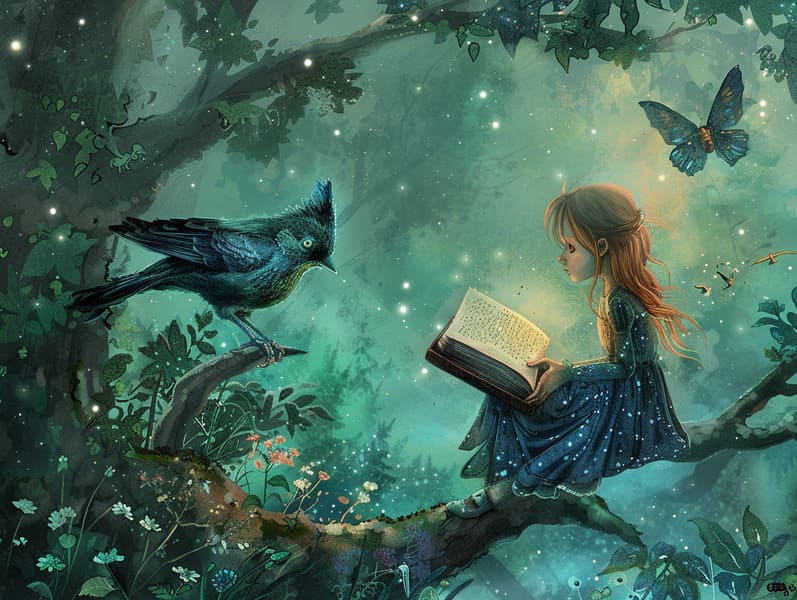The Emergence of Bedtime Fairy Tales with Their Eternal Captivation.
The Emergence of Bedtime Fairy Tales with Their Eternal Captivation.
Blog Article

Fairy tales have enduring presence. These narratives have been whispered from one generation to the next long before they were ever documented. They sprang from a variety of traditions, including Middle Eastern traditions. They were initially passed along among grown-ups, often carrying themes and messages aligned with the societal norms and beliefs of the time.
The Grimm brothers, Jacob and Wilhelm (the Grimm brothers), were among the first to compile and release many of these beloved tales. Their published works, "Grimm's Fairy Tales," included narratives like "Cinder Maid," "Little Brother and Little Sister," and "Little Snow White," which have since become pillars in the world of children's fairy tales. Similarly, Hans Christian Andersen's delightful tales, such as "The Story of the Little Mermaid," and "The Duckling's Story," have floated into hearts worldwide, securing their place in the pantheon of famous fairy tales.
Despite their historical roots, these tales remain as pertinent as ever, especially as children's night stories. These charming stories are now available in many formats, including vividly illustrated books, whimsical animations, and free fairy tales online.
Their enduring popularity can be attributed to several enchanting factors:
Moral Lessons: Timeless fairy tales often impart important moral lessons. Fairy tales like "The Tale of the Boy Who Cried Wolf" teach the significance of sincerity, while "The Story of the Tortoise and the Hare" underline the virtues of tenacity and modesty. These tales offer the young clear distinctions between moral and immoral, molding their moral compass in a tender yet deep way.
Empathy and Awareness: Classic fairy tales frequently feature beings facing challenges and struggles, motivating listeners to resonate with their struggles and encourage their triumphs. For instance, "Beauty and Her Beast" demonstrates the importance of seeing inner beauty to comprehend the true nature of a person, cultivating compassion and understanding.
Cultural Perception: Many fairy tales are interwoven with the cultural contexts from which they emerged. Learning from these stories can provide intriguing perspectives into different heritages, promoting a sense of world insight and respect.
Imagination and Innovation: The extraordinary elements in traditional fairy tales—enchanted forests—enliven children’s imaginations. These tales move readers to magical realms, boosting innovative ideas and a sense of wonder that endures a lifetime.
Old fairy tales are not only magical but also illuminating. They function as whimsical tools in building various cognitive and affective skills in little ones. When old fairy tales are narrated, they develop language skills by offering new linguistic elements and complicated sentence structures. This practice also cultivates hearing abilities and mindfulness, as young readers hang on every word, prepared to see what happens next.
Furthermore, conversing about the themes and characters of traditional fairy tales can cultivate cognitive skills and evaluative skills. Little ones are taught to spot patterns, foresee events, and grasp cause and effect. These deliberations also advance little ones voice their thoughts and feelings, advancing their emotional intelligence.
In today’s digital age, the availability of online storybooks has made these stories more accessible than ever. Digital sites and digital apps provide comprehensive collections of bedtime fairy tales that can be enjoyed or played anytime, anywhere. Fairy tales told out loud are particularly widespread, extending an entertaining method for children to appreciate these whimsical stories. Narrated books and narrated videos transport characters and settings to life, often supported by enchanting melodies and musical scores that augment the story journey.
The lasting allure of timeless fairy tales lies in their ability to shift to present days while sustaining their core values. Contemporary reimaginings of these narratives often spotlight more inclusive characters and modern read more settings, making them meaningful to today’s audience. However, the underlying themes of courage, benevolence, and integrity remain unchanged, continuing to reach young readers of all ages.
Ancient fairy tales also offer a sense of protection and understanding. They serve a tidy narrative with a obvious beginning, middle, and end, often concluding with the wrap-up of conflicts and the triumph of good over bad. This predictability can be encouraging for little ones, proffering a sense of reliability in an constantly changing world.
Classic fairy tales continue to delight and teach new generations, maintaining their splendor and value in modern society. As nighttime stories for kids, they bestow a perfect blend of enchantment and education, enhancing moral values, empathy, and creativity. The existence of digital fairy tales and the commonness of fairy tales recited ensure that these classic narratives remain available to new generations.
By maintaining and relating these stories, we continue to exalt the rich tapestry of cultural legacy and cultural heritage. Whether you are delving into a vividly illustrated book, browsing a electronic library, or listening to an audiobook, the wonder of old fairy tales is always within reach. These tales show us of the unfading impact of storytelling and its ability to unify us across centuries and lands.
No matter if you are accessing a beautifully illustrated book, accessing a cyber collection, or listening via an voice book, the magic of popular fairy tales is always within reach.
These fairy tales demonstrate of the immortal ability of storytelling and its ability to connect us across time and space, creating a bond that charms and informs alike.